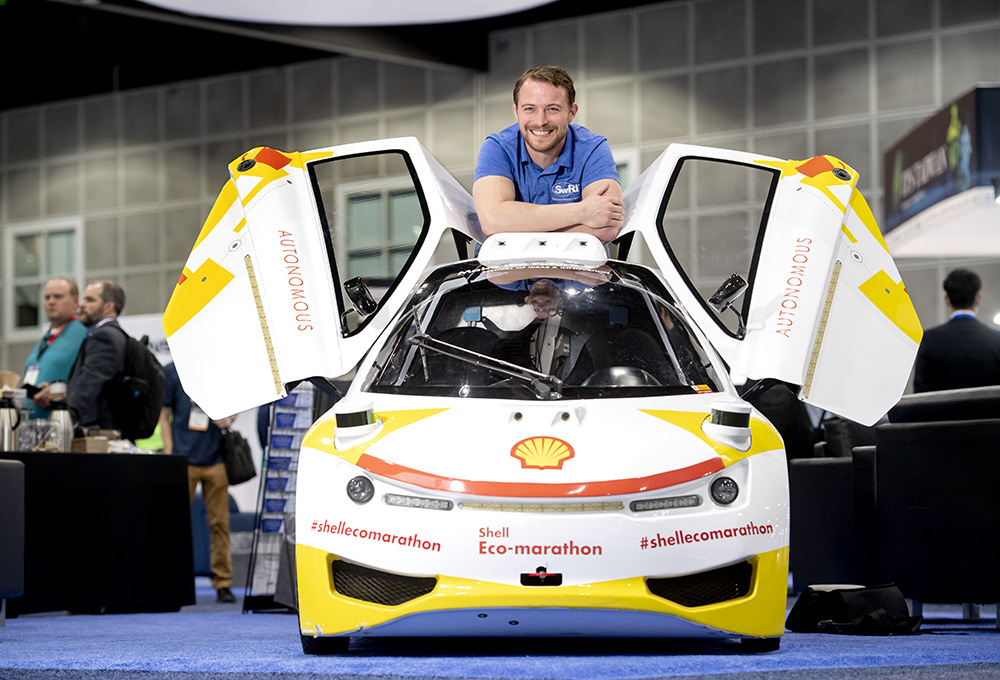
The white and yellow hatchback, with distinctive vertically opening doors, was developed by SWRI as a platform for different software stacks that can guide the vehicle and avoid obstacles such as other vehicles or pedestrians.
It is taking part in the annual Shell Eco-Marathon event, which seeks to eke out the maximum possible mileage from a set amount of fuel. Previous winning entries have achieved more than 1,000 miles per gallon (mpg), but have been basic in the extreme and have often scarcely resembled cars. The SWRI hatchback is somewhat more practical and can achieve around 500mpg.
“It’s a fully functional vehicle,” said SWRI assistant project manager, Daniel Rossiter. The car’s interior, housed inside a lightweight fibreglass shell, is still basic but can carry two people. It is powered by a small petrol engine.
To navigate successfully, the testbed has front and rear Lidar sensors, plus cameras giving 360o coverage. The vehicle’s ’brain’ that interprets input from the sensors and transforms it into steering commands, is underneath the rear hatchback. The software is hardware-agnostic.
In past years, the emphasis in the event has been on the physical engineering of fuel-sipping vehicles. More recently, however, greater attention has been placed on the software that enables it to operate autonomously.
The vehicle and the wider project aims to foster an interest in STEM subjects. “The vision is that students can build their own software stack and run it in the real world, to see if it works,” said Rossiter. Timescale for the first such software being loaded into the vehicle is the next year or two.
Booth 1123








